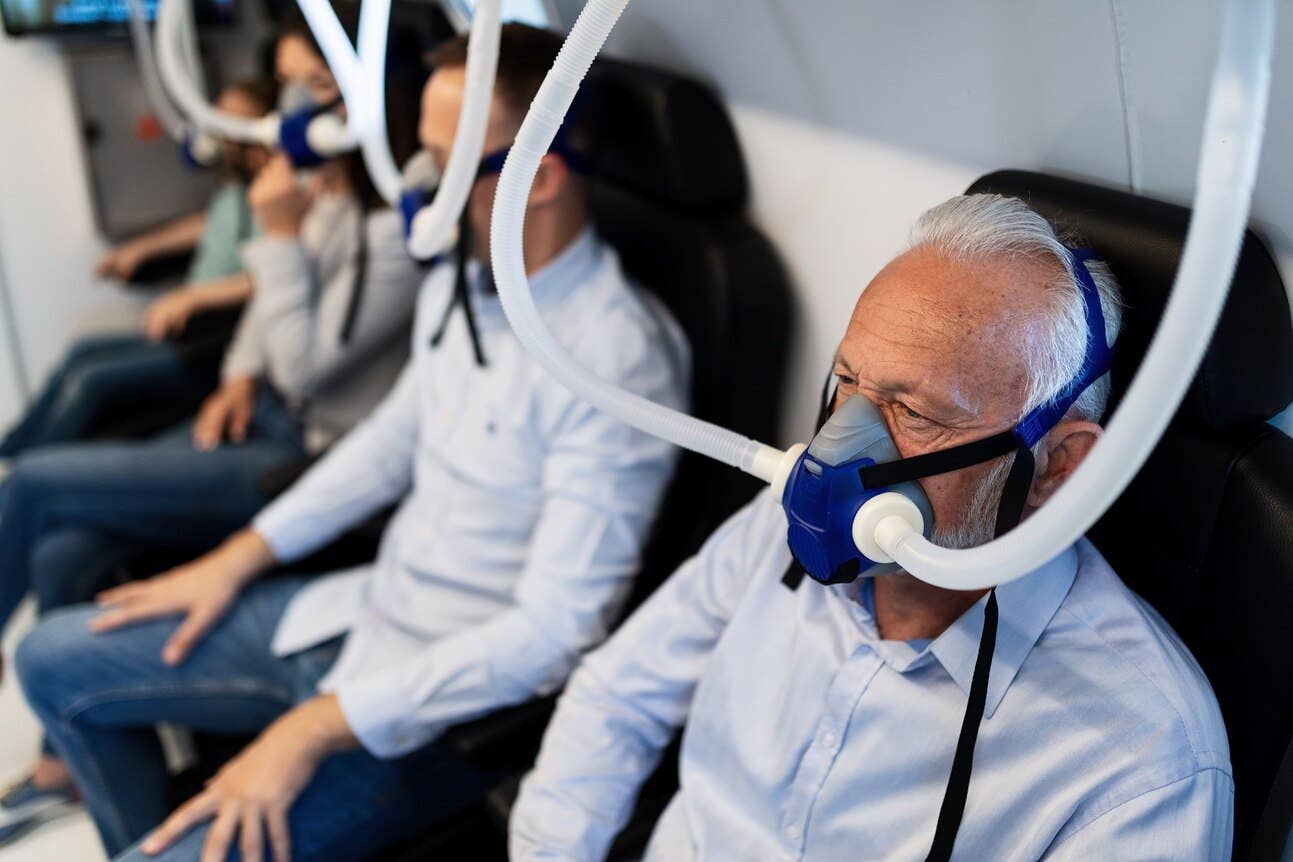Inhaling pure oxygen could keep your brain younger for longer
[July 27, 2020: Popular Science] No matter how much retinol cream and hair dye we slather on our faces and roots, we’ll all succumb to…

[July 27, 2020: Popular Science]
No matter how much retinol cream and hair dye we slather on our faces and roots, we’ll all succumb to age eventually. There’s no cure for it, and it’s much more than skin-deep—aging takes a severe toll on our neurological well-being. Although biologists recently discovered how to reprogram the molecular processes of aging in yeast cells, we haven’t yet cracked the mysteries behind aging in the human brain. Nearly 16 million people in the US struggle with cognitive impairment, a debilitating condition that eventually robs individuals of their independence by chipping away at their memory, motor functions, and ability to concentrate or learn.
But neuroscientists in Israel are trying to turn back the biological clock with one simple ingredient: oxygen. Shai Efrati, a physician and director of the Sagol Center for Hyperbaric Medicine and Research at the Yitzhak Shamir Medical Center in Israel, has developed a new type of hyperbaric oxygen therapy that increases blood flow in the brain to prevent declining cognitive function in the brains of healthy, older adults. His team’s results were published in the journal Aging this month.
Hyperbaric oxygen therapy involves breathing in pure, highly concentrated, oxygen in a pressurized chamber for a long duration, allowing a person’s lungs to collect three times the normal amount of oxygen from air. With elevated blood-oxygen levels, body tissues supposedly heal at increased rates by stimulating the formation of new vessels at sites of injury. Historically, doctors have used the therapy to treat carbon monoxide poisoning, skin burns, traumatic brain injuries caused by strokes, and gas embolism, a condition that impacts deep-sea divers when nitrogen bubbles form in the circulatory system. More recently, hyperbaric oxygen therapy has been advertised as an all-encompassing treatment for many diseases—though the FDA emphasizes that the therapy hasn’t been clinically proven to treat cancer, diabetes, and autism.
Like these kind of stories? Get The Brighter Side of News' newsletter.
In this recent study, Efrati tested the therapy on normally aging adults without preexisting conditions to improve their cognitive function. For three months, 63 adults aged 65 and older spent five days a week, two hours a day in a pressurized chamber, breathing in concentrated oxygen at levels 1,500 times higher than that in the atmosphere. By the end of the study, Efrati discovered that blood flow in the brain increased. Frequent cognitive assessments also revealed that patients scored much higher on attention and information-processing speed tests than prior to the experiment.
Here’s how the researchers say it works. By dramatically raising blood-oxygen levels in aging patients, Efrati harnessed oxidative stress to prompt some brain cells to go into survivalist mode. Oxygen atoms are free radicals—at concentrated amounts, they scour the body, damaging DNA, cells, and proteins in a phenomenon called oxidative stress. “These short periods of high oxygen actually impose a mild beneficial stress on cells in the brain,” says Mark Mattson, a professor of neuroscience at Johns Hopkins University. This pressure might promote neurogenesis, a process in which stem cells form new neurons and brain cells, essentially making the central processing unit look and run “younger.” Exercise and intermittent fasting invoke similar reactions in the brain, Mattson says, without extreme adverse impacts.
It’s not just about raising oxygen levels, however: Fluctuation is also key. During the study, Efrati instructed patients to keep oxygen masks on for 20 minutes, then remove them for five-minute breaks. “You put the mask on and breathe 100 percent oxygen,” says Alexander Alvarez, a physician at Aviv Clinics, who administers hyperbaric oxygen therapy. “Then, when you take off the mask, the body thinks it’s in trouble.”.... MORE
Joseph Shavit
Head Science News Writer | Communicating Innovation & Discovery
Based in Los Angeles, Joseph Shavit is an accomplished science journalist, head science news writer and co-founder at The Brighter Side of News, where he translates cutting-edge discoveries into compelling stories for a broad audience. With a strong background spanning science, business, product management, media leadership, and entrepreneurship, Joseph brings a unique perspective to science communication. His expertise allows him to uncover the intersection of technological advancements and market potential, shedding light on how groundbreaking research evolves into transformative products and industries.



